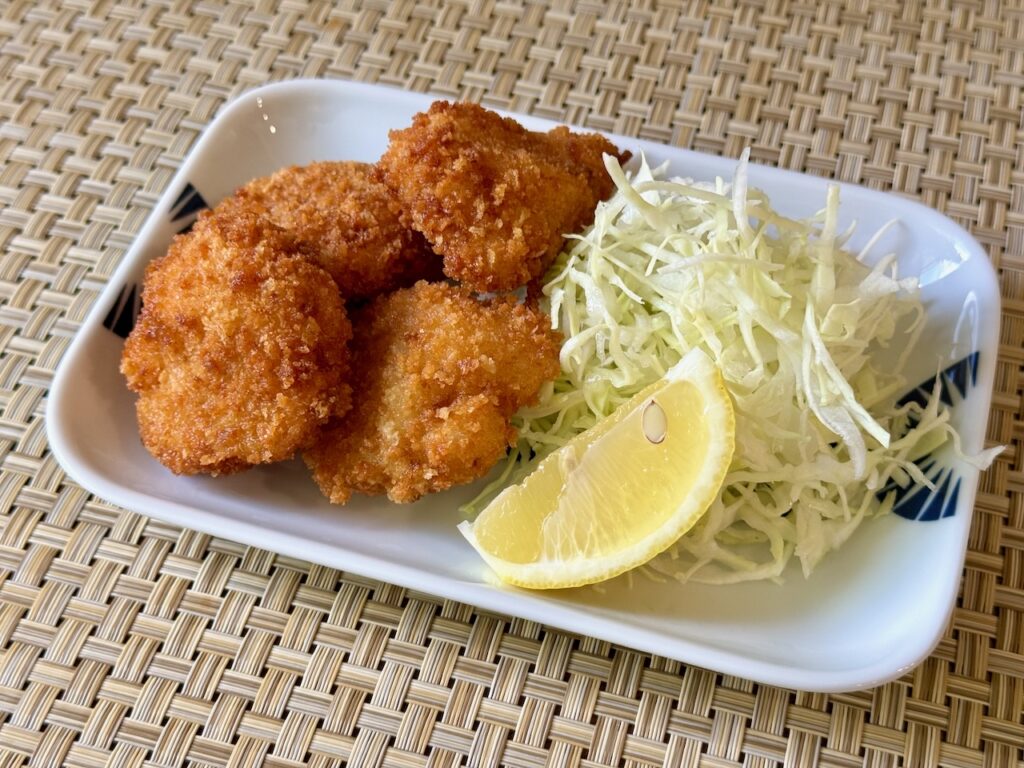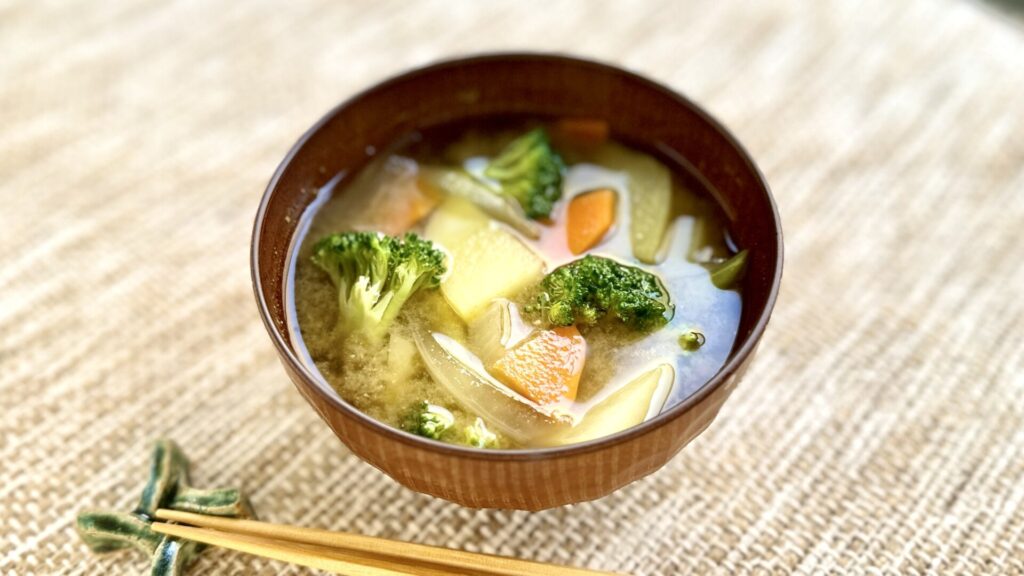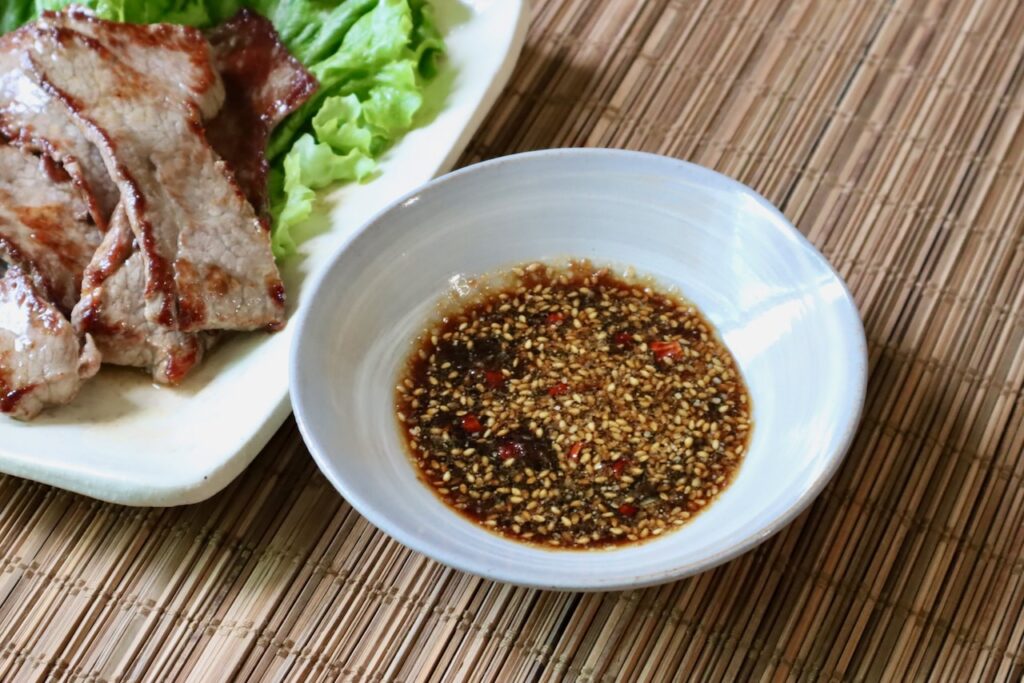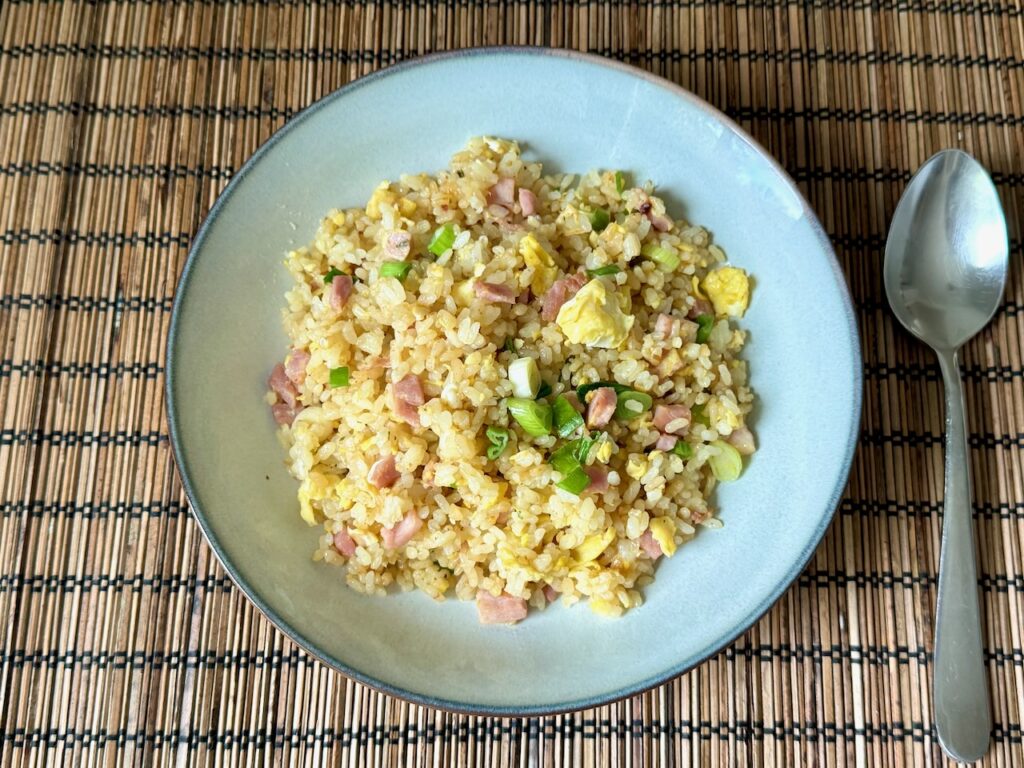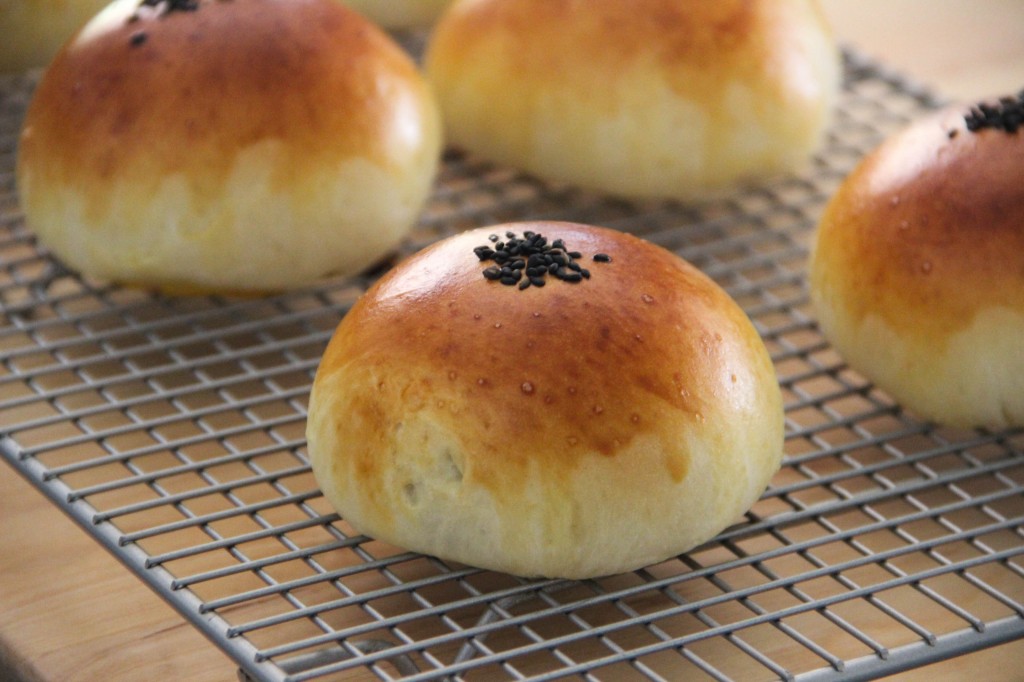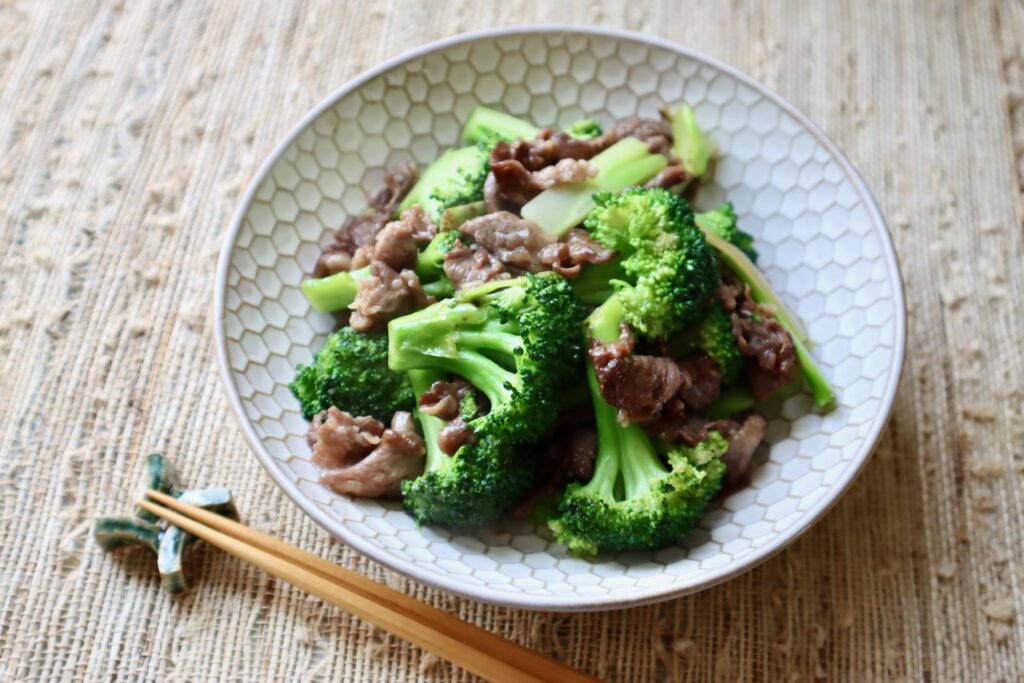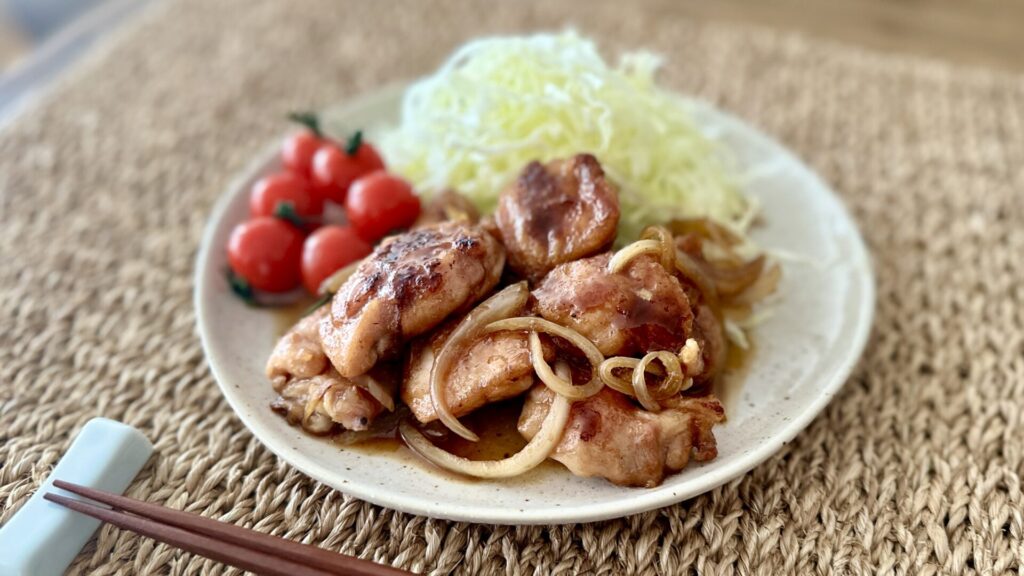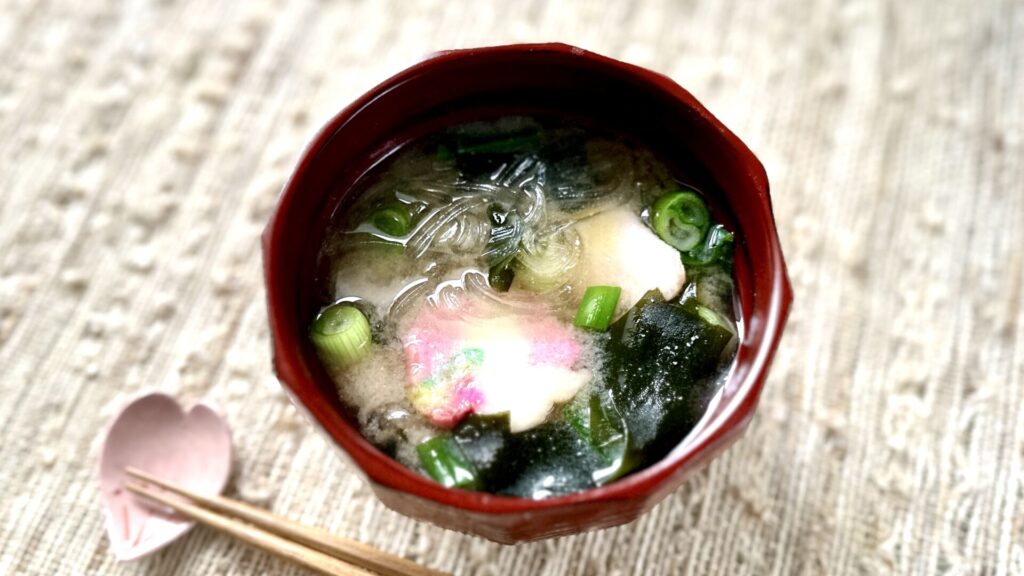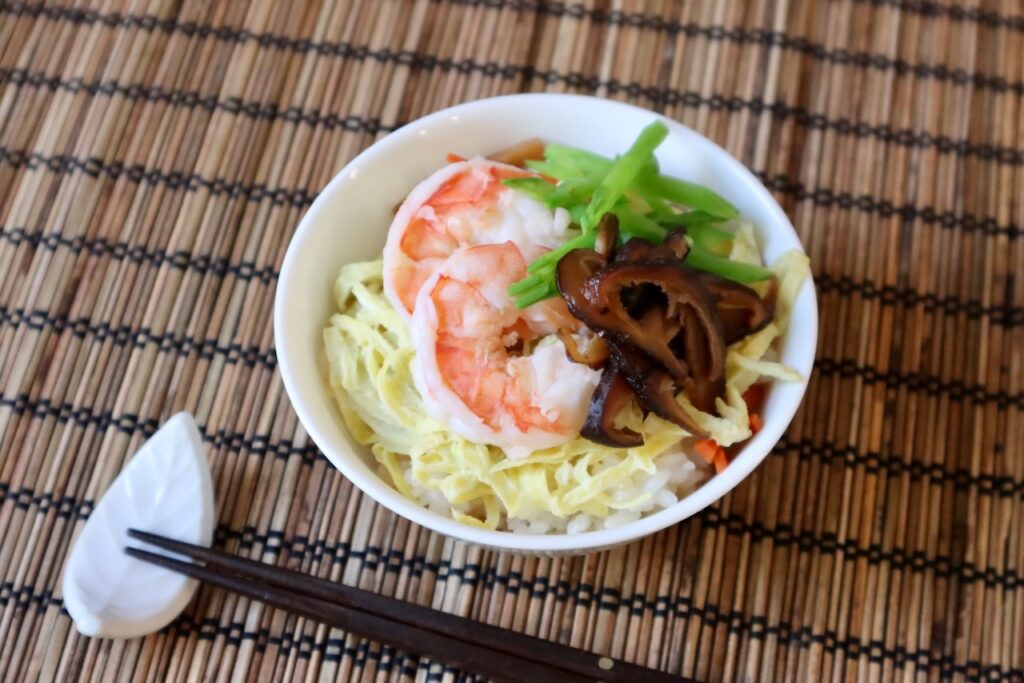Deep-fried sea scallops (Hotate in Japanese) are large sea scallops breaded with Panko crumbs and deep-fried, renowned for its crispy coating and juicy, sweet interior, commonly savored in izakaya bars and seafood restaurants across Japan.
Crispy Shokupan Crusts are fried bread crusts coated with sugar. They are not the healthiest, but they’re a cheap and delicious homemade snack. Many of us make sandwiches at home and cut off the crusts from the bread and throw them away. Next time you make sandwiches, save those crusts! Simply deep-fry the bread until nice and crispy, coat with sugar, and that is it. If you want flavor twists, add some cinnamon or Kinako (soybean flour) to the sugar. To avoid the bread becoming greasy, deep-fry at a higher temperature. But be careful not to burn it at the same time. Fry the crusts, stirring constantly until they’re nicely browned and light. Eat them while still warm; they are absolutely delightful! Hope you give it a try!
Today’s miso soup is made with vegetable broth. You can clean out any leftover vegetables from your fridge, cooking them in convenient store-bought broth. Then, season with the miso paste of your choice to create an easy-to-make, tasty miso soup for any time of day. Even without dashi, this miso soup offers plenty of umami flavor and a touch of natural sweetness from the vegetables and broth. The only thing you need to be careful about is adjusting the amount of miso paste depending on the type of vegetable broth you use. Many store-bought broths contain sodium, so add the miso paste gradually to avoid it becoming too salty. Other than that, this healthy miso soup is great because it’s not only delicious but also incredibly nourishing. Plus, all the ingredients can be found locally without a trip to the Japanese market. Vegetarian and vegan-friendly too. I hope you give this a try!
Yakiniku sauce, a dipping sauce for Japanese BBQ, is a soy sauce-based sauce infused with rich flavors of garlic, sesame, and other spices. It serves as a fantastic accompaniment for Teppanyaki meats and vegetables, Yakiniku BBQ, and beyond. It’s almost like a multi-purpose sauce that can elevate many dishes such as stir-fried vegetables, salads, and simple pan-fried meats. Having Yakiniku BBQ Sauce in your Japanese pantry ensures that your dishes will consistently taste delicious without the need to adjust or match many different seasonings.
Fried Rice, known as Yakimeshi in Japanese, is such an easy dish to make with ingredients you already have. It’s a typical lunch dish to make at home with leftover rice, meat, and vegetable you have in the fridge. While salt and pepper with a bit of soy sauce are all you need to season Japanese-style fried rice, here we use dashi stock powder.
Bread may not be a traditional Japanese food like rice, but it has been an important part of the Japanese food culture for decades. More people eat bread than rice for breakfast, and there are many bakeries that specialize in Japanese-style fluffy bread or European-style artisan bread everywhere in Japan. Bakeries are usually inside or in front of major train stations so that people can pick up some freshly baked bread for the next day’s breakfast after work. If you have traveled to Japan, you may have noticed the irresistible smell of freshly baked bread when you get off a train or walk on a neighborhood street. For those of us who do not live near Japanese bakeries, we have some easy-to-follow bread recipes here.
Broccoli and beef stir-fry is a staple Japanese home-cooked dish. Similar to the Chinese classic, broccoli and beef with oyster sauce stir-fry, which is one of the most popular Chinese dishes of all time, our version is less saucy and lightly flavored, making it perfect for everyday dinners or packed Bento lunches. Its taste is simple and fresh, and no one will complain when it appears on the table frequently.
Chicken Shogayaki (鶏の生姜焼き) or ginger chicken is sautéed chicken and onion in a ginger-soy flavored sauce. Just like Ginger Pork and Ginger Beef, this is a popular meat entree for everyday dinner in Japan. The taste of spicy ginger and lightly sweet savory sauce perfectly complements steamed rice. Along with some miso soup (find your favorite from many miso soups in our library!), you have a nutritious and delightful meal. The dish can be done in a matter of 10-15 minutes, so it’s easily made after work or school on busy weekdays. The typical and best side vegetable for Ginger Chicken is shredded cabbage, which adds a refreshing crunch to the meal, but a green salad would do too if that’s easier. If you don’t know what to cook, this is it! Hope you give it a try!
Today’s miso soup features Harusame glass noodles. Harusame (春雨) are smooth and glutenous noodles made from potato starch. Harusame is typically sold as hard, dried white sticks, but once cooked, they becomes soft and clear noodles. Harusame literally means “spring rain” in Japanese, which is quite poetic. Harusame is often used in Nabe hot pot dishes or salad in Japanese cuisine, but it’s also great in miso soup. As long as it’s not a large amount added to the soup (as it will absorb liquid), there’s no need to rehydrate it beforehand. We also added Fu (麩), glutenous wheat bread, which tastes like soft croutons in the soup but acts more like a garnish here. Flower-shaped Fu, as used in the recipe, adds a splash of color, perfect for springtime. We hope you give it a try!
Mushizushi refers to sushi where Barazushi (mixed sushi with cooked vegetables) is placed in a steamer and served warm. In winter, the steam rising from the steamer placed outside sushi restaurants in Kyoto and elsewhere has been known as a seasonal tradition in the Kansai region (western Japan). By warming it up, the sourness of the vinegar becomes milder, resulting in a gentle taste. The rice also becomes plump and flavorful. While traditional Barazushi is always delicious, steamed sushi offers a unique flavor experience.
